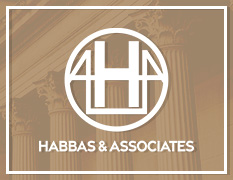Multiple federal and state laws protect workers from workplace discrimination, which is commonly defined as adverse employment action against a person who falls under a protected category. But contrary to popular belief, it isn’t easy to bring a workplace discrimination lawsuit and win: To be successful, you must be able to show factual evidence for your case.
At Habbas & Associates, our attorneys have over 200 years of experience helping our clients navigate this complex area of the law. Whether you just have a “gut feeling” that you’ve experienced discrimination or if you already have strong evidence of the discrimination in progress, we can define your goals and seek justice for your losses.
Before you get started, however, there are a few things you should know about proving workplace discrimination.
Proving Workplace Discrimination
In workplace discrimination cases, there’s rarely ever a single instance that shows discrimination took place or a “smoking gun.” Additionally, not all forms of discrimination are covered under federal and state laws, so it’s important to make sure that you are a member of a protected category before you begin a case.
For example, under the federal Age Discrimination in Employment Act or ADEA, it’s illegal for employers or your colleagues to commit discrimination based on being over 40. Meanwhile, Title VII of the federal Civil Rights Act covers a wider range of protected categories, including sex, race, and other identifying characteristics.
Here are some of the primary protected classes or categories under federal and state laws:
- Sex
- Race
- National origin
- Religion
- Pregnancy & related conditions
- Color
- Age
- Disability status
- Veteran status
- Several local and state-specific categories vary by region, including:
- Gender identity and sexual orientation
- Language
- Immigration status
- Genetic information
- Caregiving status/family responsibilities
If you are a member of one of these protected categories, your employer cannot take adverse action against you. An adverse action can happen at any point during the employee-employer relationship, from the hiring process to promotions to termination. This is a broad definition, which means that you will need to speak with a qualified attorney to determine whether discrimination took place in your case.
Once it has been established that you are part of a protected class – and that you suffered discrimination despite being qualified for a position or project – you will need to show that there is evidence. This evidence can either be direct or circumstantial. Because most discrimination cases are built on circumstantial or “indirect” evidence, you should be ready to share any contextual factors, conversations, or experiences that are related to your discrimination.
We Can Help You Navigate a Discrimination Claim
Bringing a workplace discrimination claim can be a stressful experience, as many people experience retaliation and other unlawful behavior from their employers when they try to report unfair treatment. This kind of behavior should always be seen as unacceptable at American workplaces, and when you work with our experienced team at Habbas & Associates, we’ll stand up for your right to a safe and welcoming work environment. With a comprehensive knowledge of the laws and statutes in California, we’ll help you determine the best course of action for recovery.
Contact us today at (888) 387-4053 to get started!


